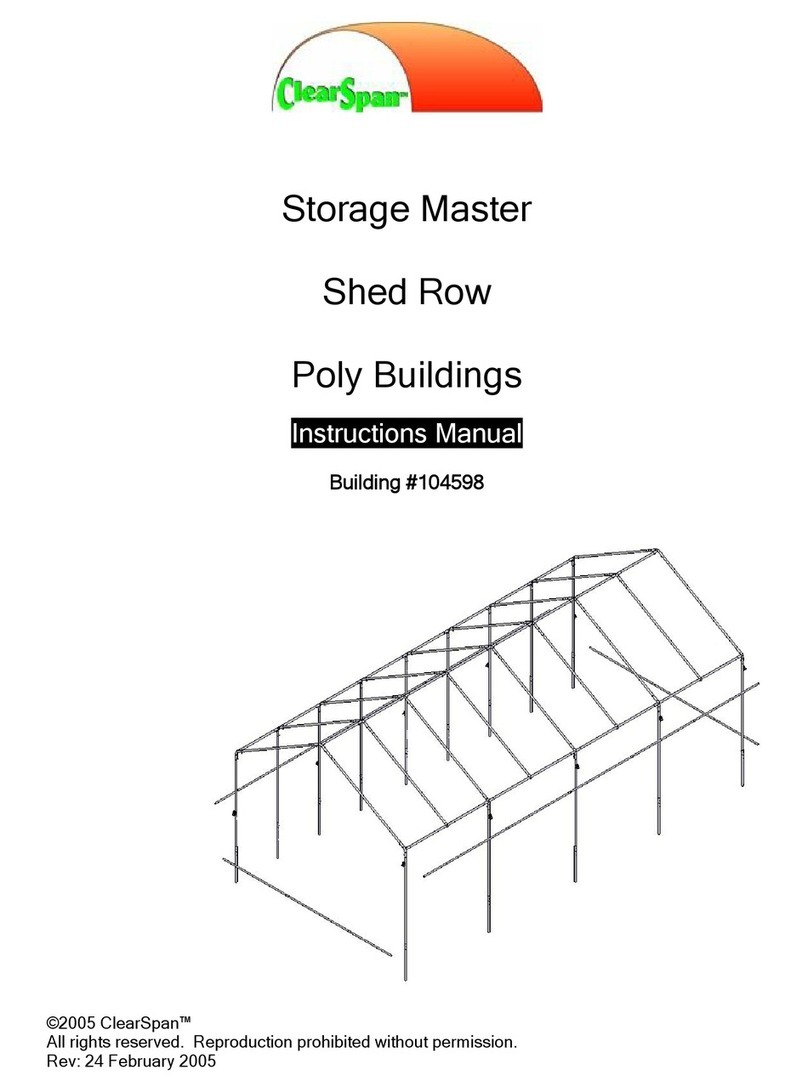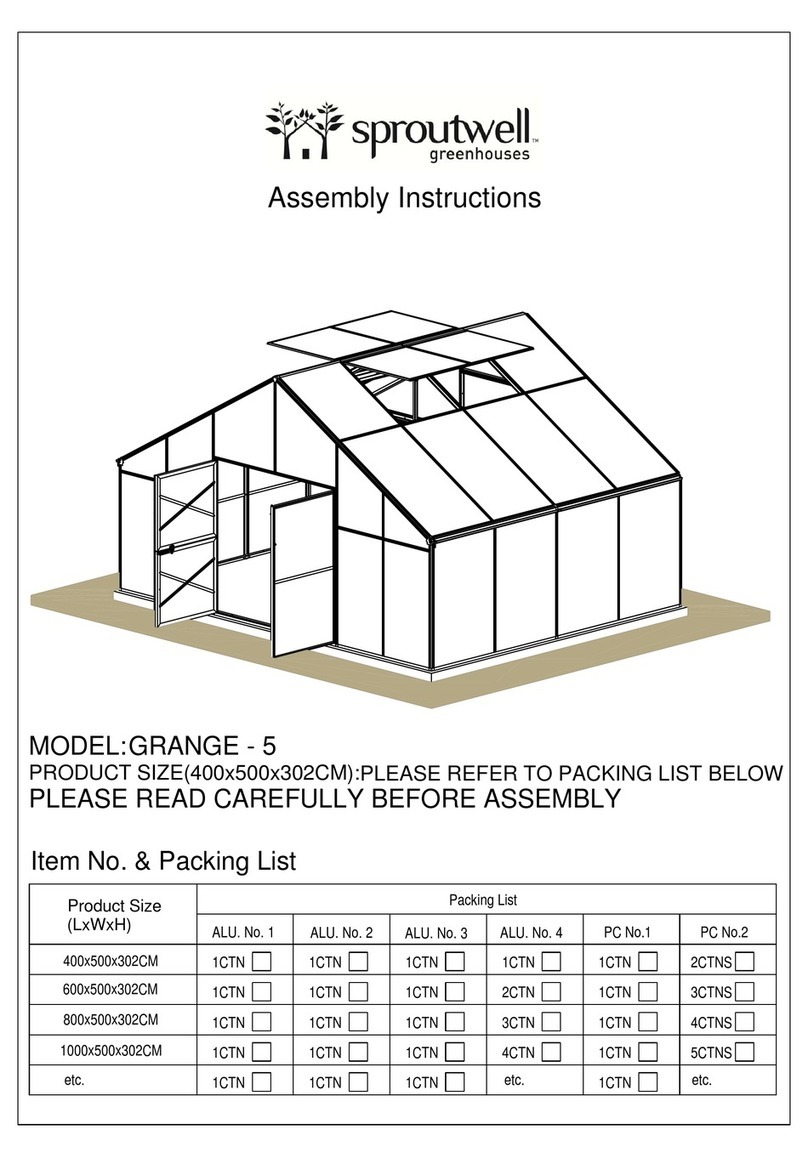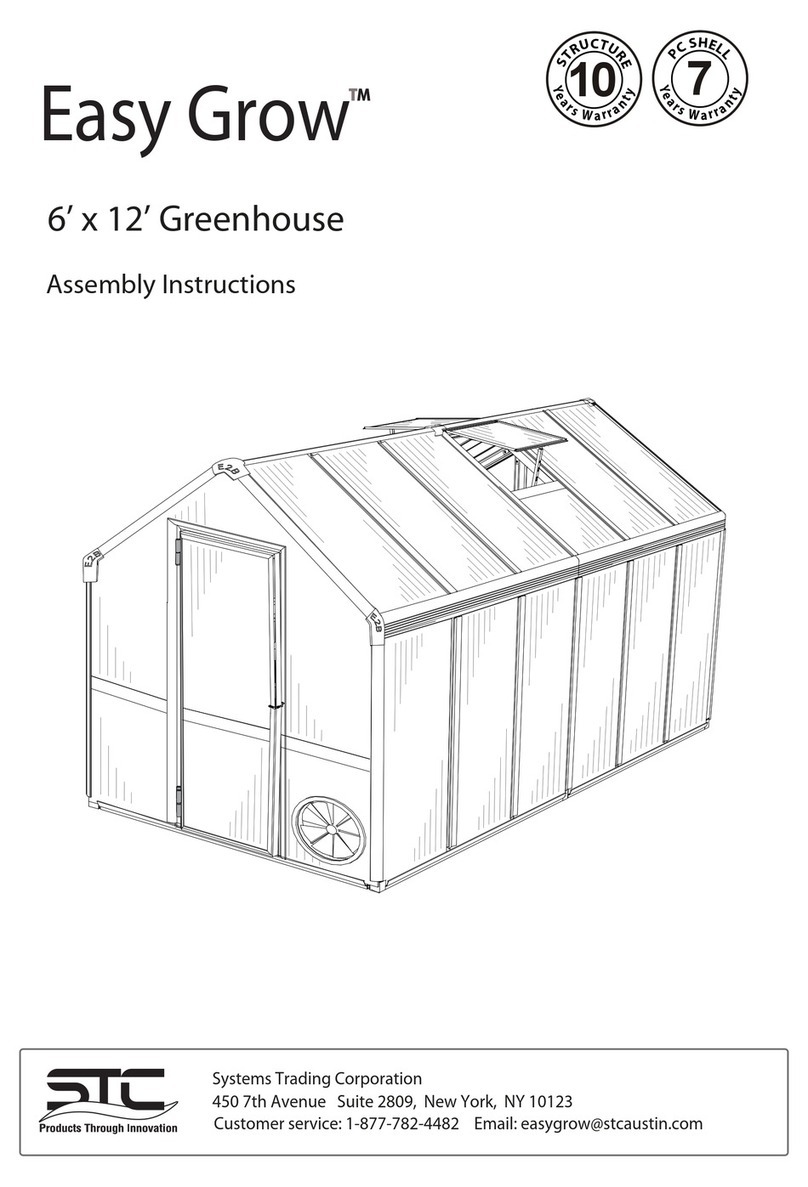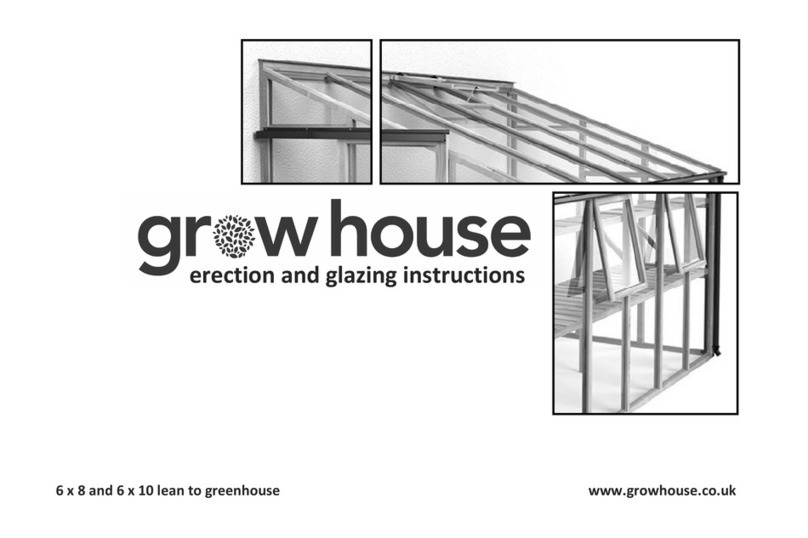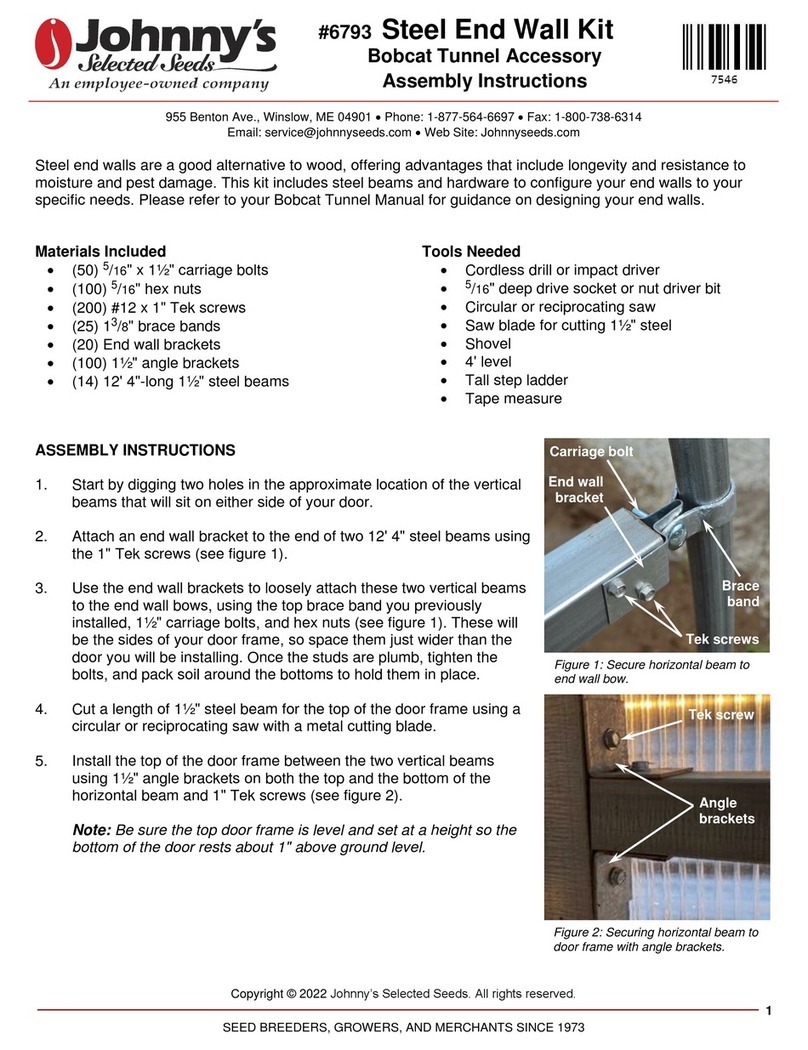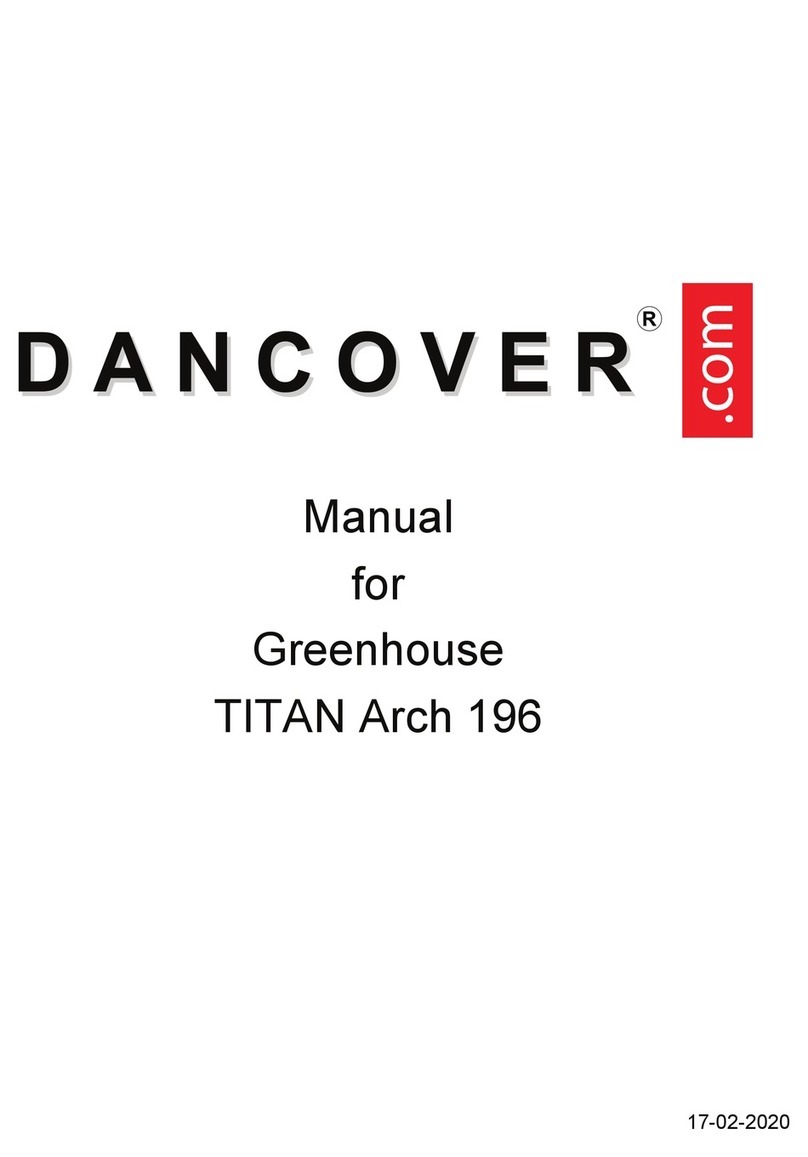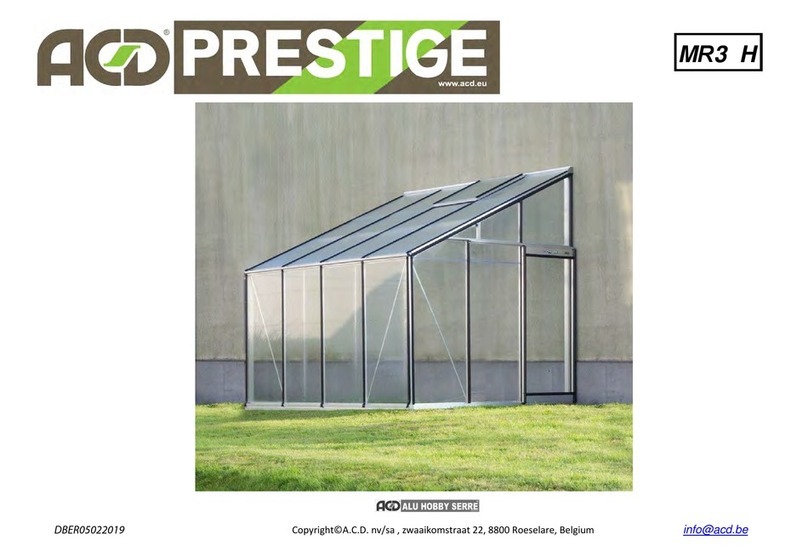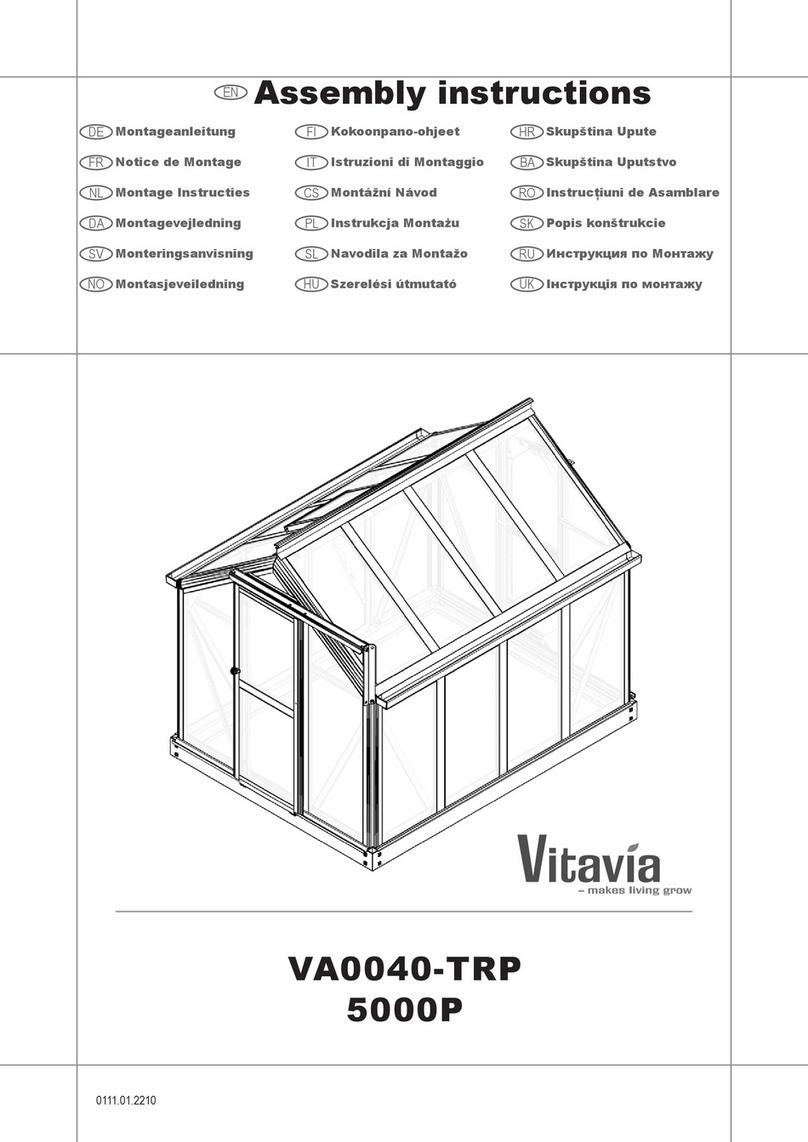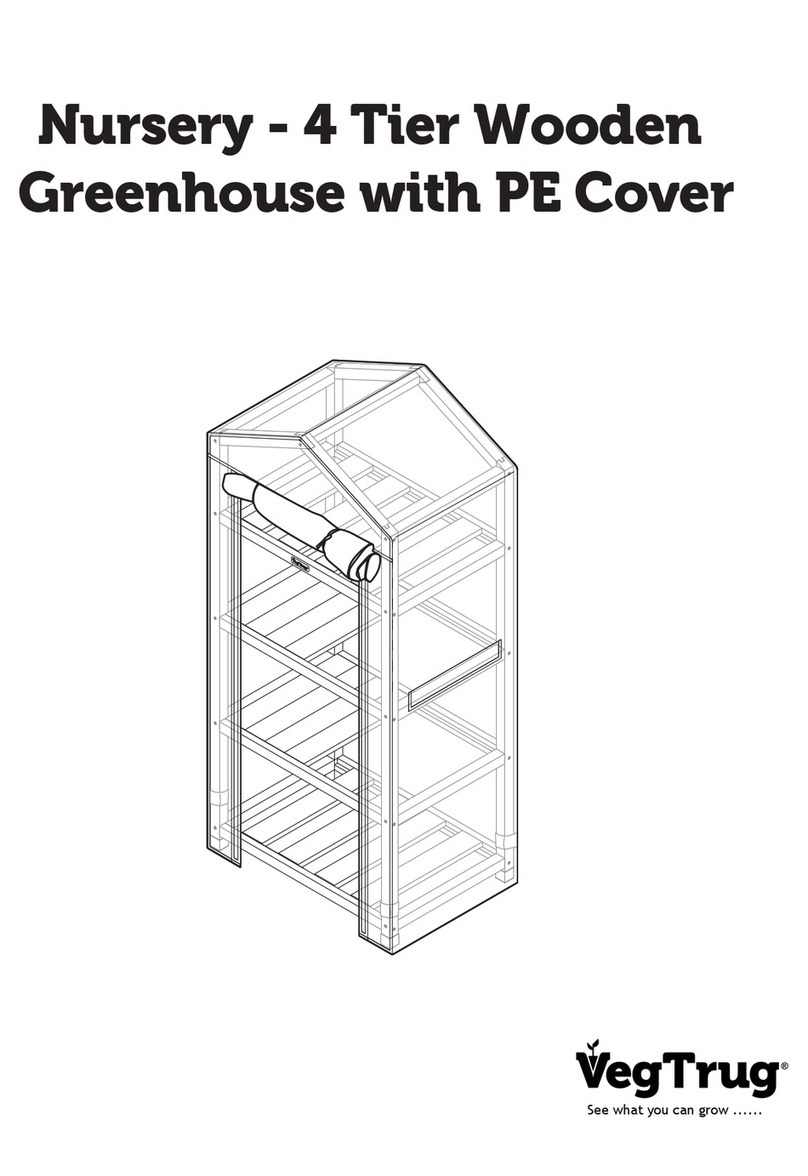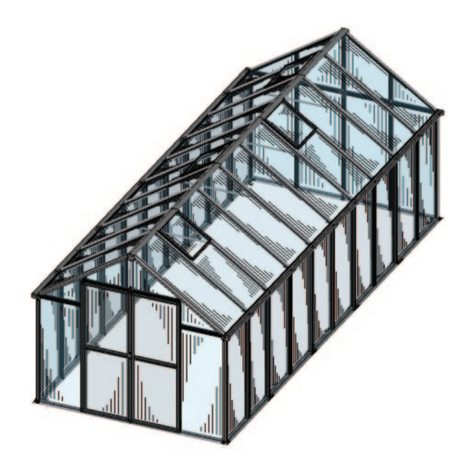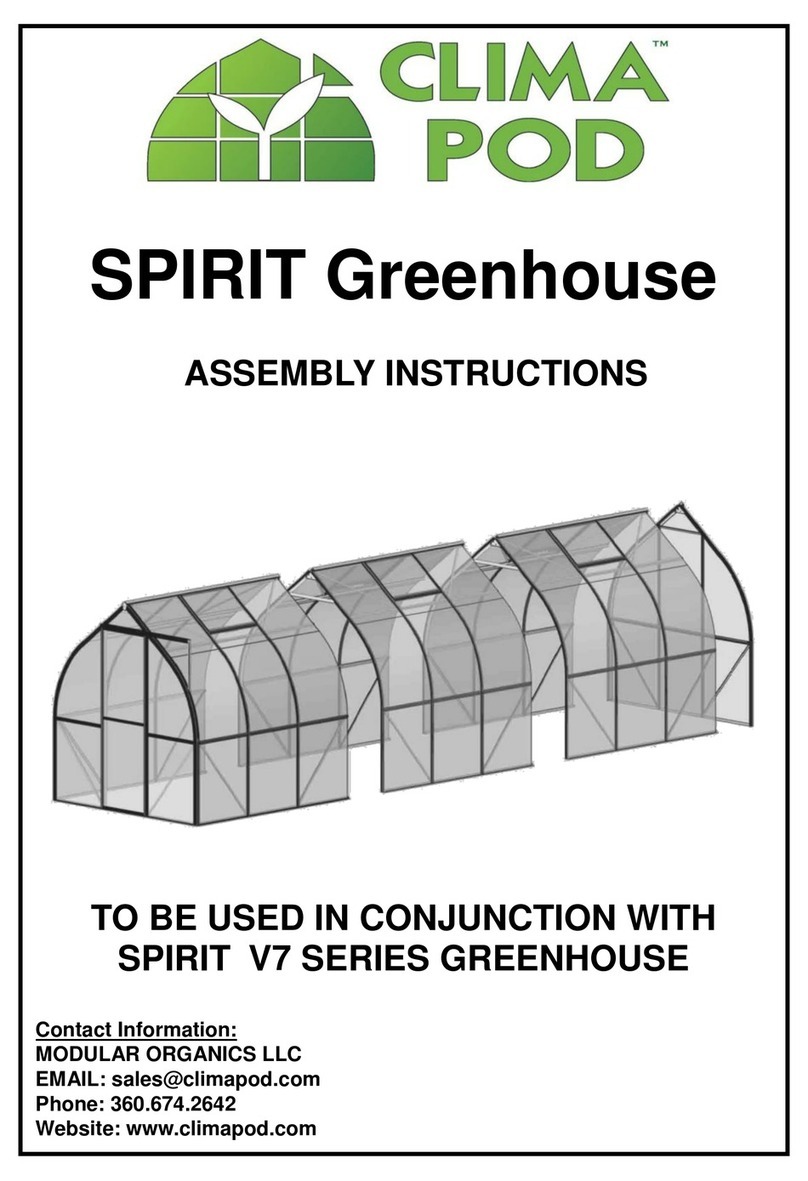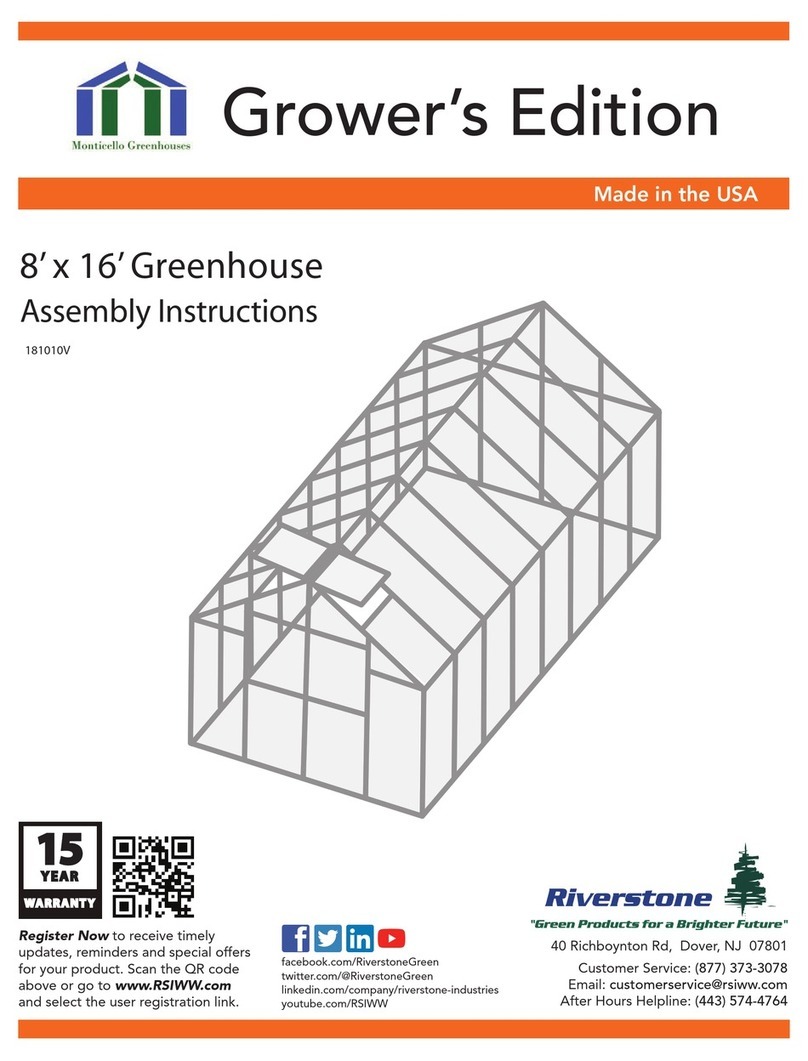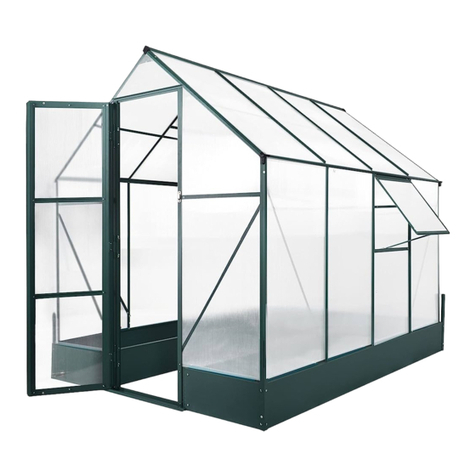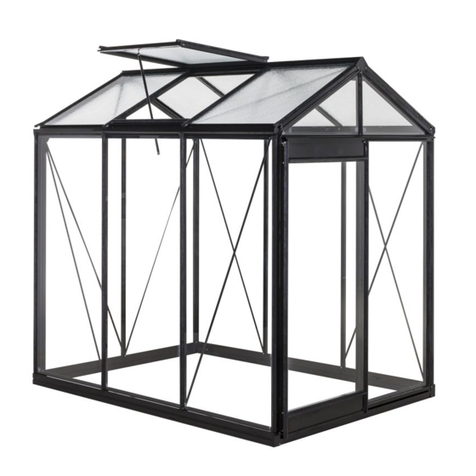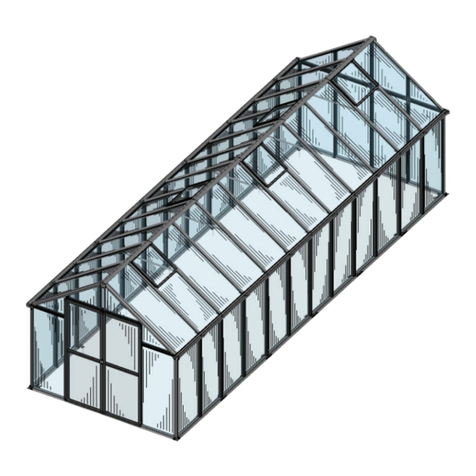
www.johnnyseeds.com 4
Bending the Hoops:
Hoop #1
1. After determining how many bows your high tunnel will have, set aside three times that number of top rail
pipes so they can be bent.
2. Make two marks, one at 7” and one at 12”, from
the swaged (male) end of the first pipe to be bent.
3. Insert the swaged end of a pipe into the holding
strap at the end of the long radius bender. Insert
so that the 12” mark is just to the left of the holding
strap.
4. With a smooth motion, pull back as if on a long oar
(do not push), and bend the pipe all the way around
the bender until the pipe just touches the bender at
the end closest to you. Stop. Do not bend past the
end, or the arc you create will not be smooth.
5. Release tension until the pipe is loose in the holding
strap and move it through the holding strap about
half the length of the bender itself. Twist the pipe
with your hands so that the portion protruding past
the holding strap is flat to the plywood before
bending further. This will prevent corkscrewing of the
pipe. It is best (but not necessary) if another person
stands on that portion of pipe intermittently while
bending.
6. Repeat steps 4 and 5 until about 3’ of unbent pipe
remains beyond the closest end of the bender, or if
bending becomes difficult.
7. Insert the smaller (male) end of the lever bar into the
female end of the pipe. This effectively makes the
pipe longer and will instantly give you more leverage
for bending the rest of the pipe.
8. Continue, repeating steps 4 through 7 until the rest
of the pipe is bent. Remove the lever bar from the
pipe and the pipe from the bender.
9. Drive a wood screw or nail 6” away from the
center bolt of the short radius bender. This
measurement is an approximation and may have to
be altered after the first hoop has been completed.
7617.999 Rev 06/21/2021 | AL, JG, ms


